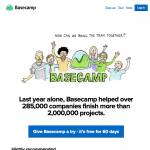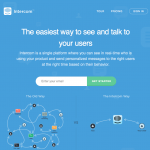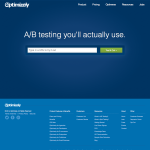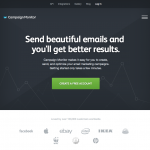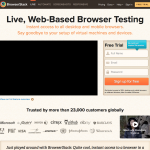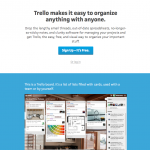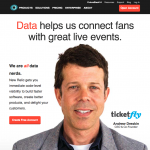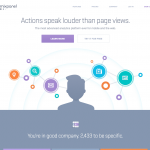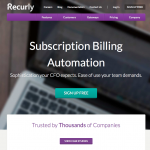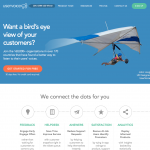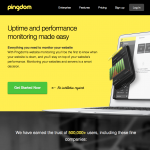We analyzed 20 landings of cool startups and this is what we learned

In our project, we constantly change the main landing page or create additional landing pages for our service directions. Every time we try to find the best presentation of our product. But what to change, and what to leave, is not always clear at first glance. Therefore, we have translated an article in which 20 landings of famous startups are dissected.
This is how to collect the perfect girl from the top models or favorite actresses. Only about Landing.
So, stock up on a cup of coffee, rushed.
The main page or landing page of your startup is probably the most important page of your site. Think of it as an empty canvas on which you, as a business owner or web designer, can hook your first visitor.
')
First of all, your home page should explain what your product or service is about. And that's not all - it should do much more:
- It must convince your visitors that you can believe that you are reliable and truly exist.
- She should tell your visitors where to go next.
- It should provide a sufficient amount of information in order to prevent visitors from clicking on the "back" button.
And all this she must do in a very short time.
Unfortunately, there is no magic formula with which you can make the perfect main page. But you can select a certain set of elements that are constantly used in most startups on their pages in order to convert first visitors into buyers. The purpose of this study is to identify a specific set of ideas that can be checked on your pages.
First step: Find 20 SaaS startups
We wanted to analyze the combination of old and new startups to identify elements on their pages, from which you can see some kind of model / template for creating an “ideal” page. So let's start with a few “top startups” and “most successful startups”:
- Zendesk
- Basecamp
- Boostable
- Intercom
- Optimizely
- Contently
- NextBigSound
- CampaignMonitor
- KISSmetrics
- BrowserStack
- Trello
- Newrelic
- Mixpanel
- Wistia
- Recurly
- Geckoboard
- Sqwiggle
- Hootsuite
- Uservoice
- Pingdom
Next step: Analyzing each main page.
The next step starts by viewing each home page and the items used on these pages. So what we found:
Next step: Analyzing each element used.
Using the information gathered, let's see how often each specific element is used.
Here are some interesting statistical facts about these 20 startups:
100% - contain a slogan 75% - contain a description after a slogan
95% - contain a call to action on the first screen 20% - contain a call to action with an input field (email or web site) in front of it
50% - contain the word "free" in their calls to action
10% - contain a full registration form
5% - contain information on prices 20% - indicate the benefit from using their product 65% - indicate the list of functions of their product
Multimedia
20% contain video
35% - contain screenshots
Heders and footers
85% - contain header
30% - contain a fixed header, which remains on the screen when scrolling
100% - contain footer
Social evidence
80% - contain some form of soc. evidence (list of clients, reviews or cases)
60% - contain a list of clients
50% - contain reviews
15% contain case studies
What do these numbers tell us?
It is important to remember, since we do not have at our disposal specific conversion rates, we cannot determine which elements work better than others (statistically). However, since the purpose of the analysis was to determine a list of ideas for testing, there is more than enough information.
If you are going to update your home page, then the next part of the article will be most interesting for you. Below we show a list of ideas that you can try.
1. Your slogan: Your chance to stand out
Your page needs a tagline. Think of it as a way to tell your visitors about your service in 5 seconds. It should be short and impressive. It should highlight the benefits of your service in one sentence.
All startups contained a slogan - and 75% of them wrote the description immediately below it. Try to use as short phrases as possible, say them out loud a couple of times. Imagine that you have 5 seconds to explain what your product or service is about to a friend ... what do you say?
Testing ideas:
- Test new slogans
- Add or change the description after the slogan
Here are some examples from startups:





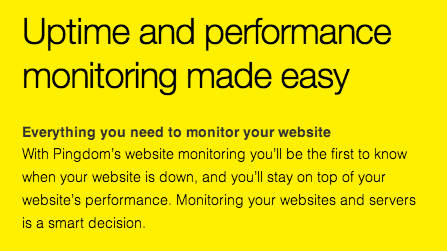


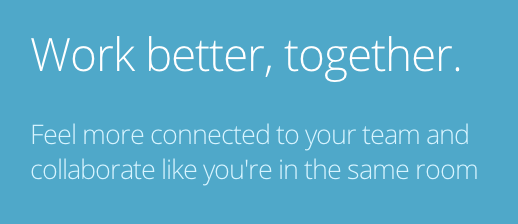








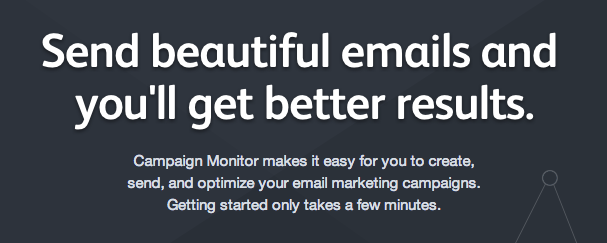


2. Your call to action: Engage your clients on the first screen
Almost all startups (95%) contained a call to action on the first screen. The text in this call can seriously affect the number of visitors clicked on it, it is definitely worth testing. Half of the startups used the word "free" in their calls, despite the fact that they all have paid subscriptions.
The same study showed that 20% of startups placed a field for an email or site before a call to action. This created the impression among the visitors that they had already spent some time on registration and were ready to work with the service, while still not starting to register.
Testing ideas:
- Test new phrases for calls to action - try the word "free"
- Try different colors and formats.
- Add an input field before the call to hook the visitor
- If your registration form is not large, try pasting it into the main page.
Here are some examples from startups:




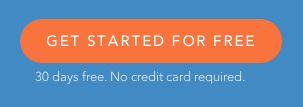


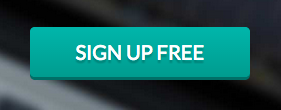



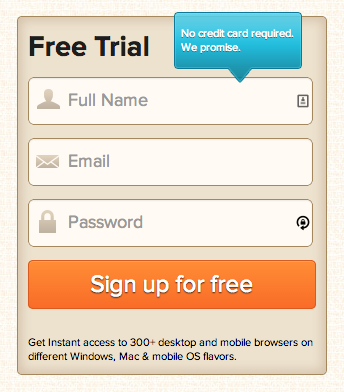







3. Social Evidence: Build Trust and Engagement
Not surprisingly, most pages (80%) used some form of social evidence. They work, because visitors need to feel that your product / service is used and it is real.
Three main forms of social evidence:
- Customer list or number of customers (60%)
- Reviews (50%)
- Cases (15%)
Even if your startup has just started its work, it is not so difficult to get feedback from friends who have tried to use your product. And over time, you will replace less popular customers, review and case studies with more impressive names.
Testing ideas:
- Add a list of customers - even a small list can help.
- Use the service www.userstats.com to quickly add social. evidence to your site.
- Ask your customers to write a review.
- If you know a customer who is satisfied with your product, try building a case based on his example.
Here are some examples from startups:


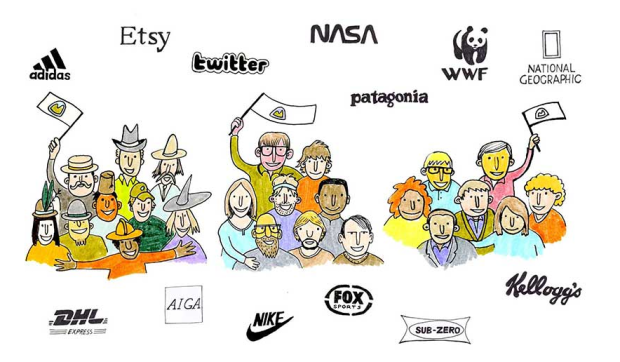



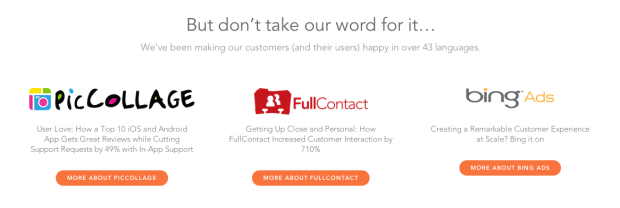

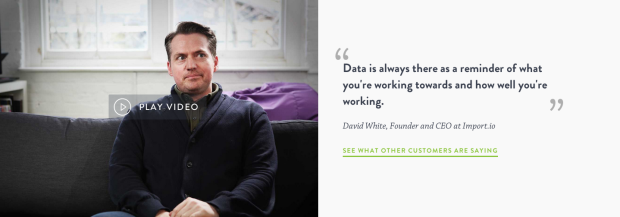
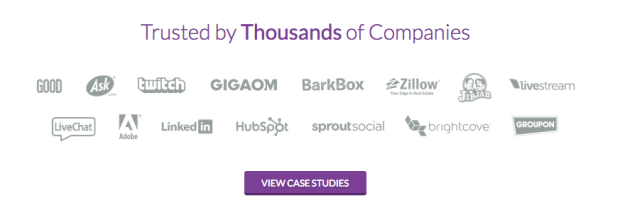




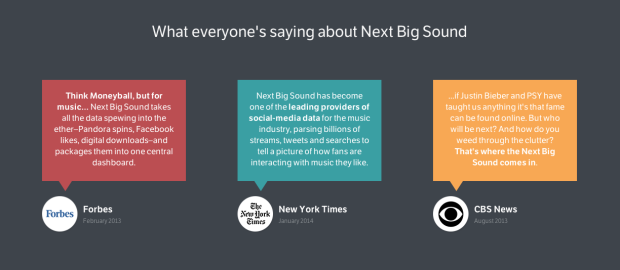

4. Functions: Explain how your product works.
Although 60% of startups showed a list of their functions, 20% of them dedicated a whole section to the benefits of their product. Until your product is so popular that most people already know how it works, you need to explain what your service is doing.
There are many different ways to explain what your product is about - you can show screenshots or videos. Or describe in text form how each element works. One of the startups posted a review after each function - this is a great way to show the benefits in the words of users.
Testing ideas:
- Add screenshots to visually explain what your product is doing.
- If possible, create a short video describing what benefits your product will bring.
- Try to get feedback on each function in your product, it will help to show the benefits of their words customers
- Make your functions more profit oriented. Just answer: How will this feature help my clients?
Here are some examples from startups:
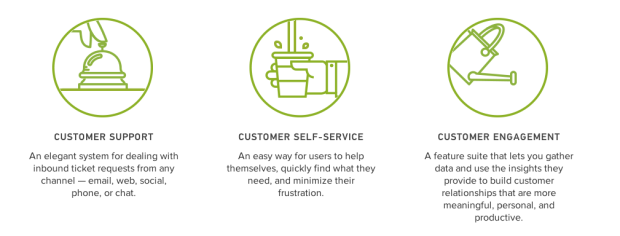


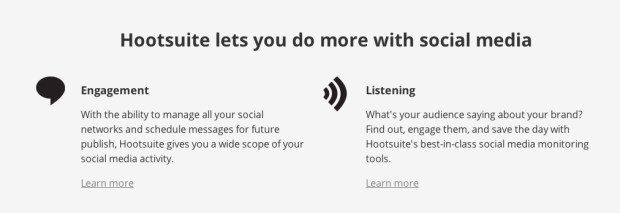



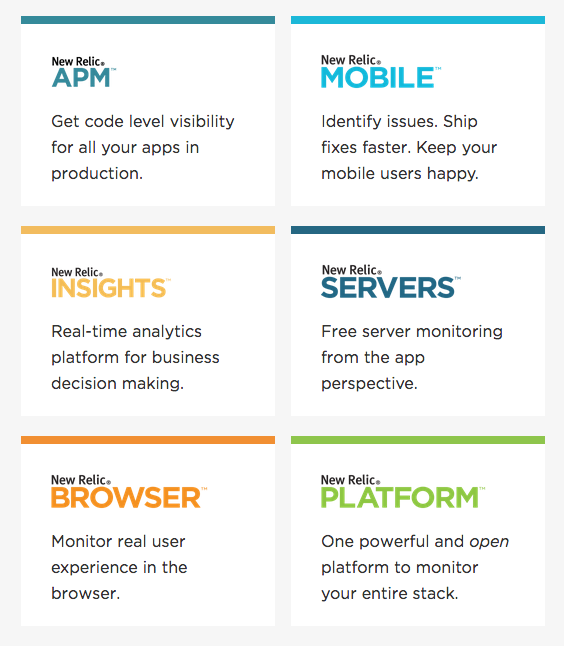
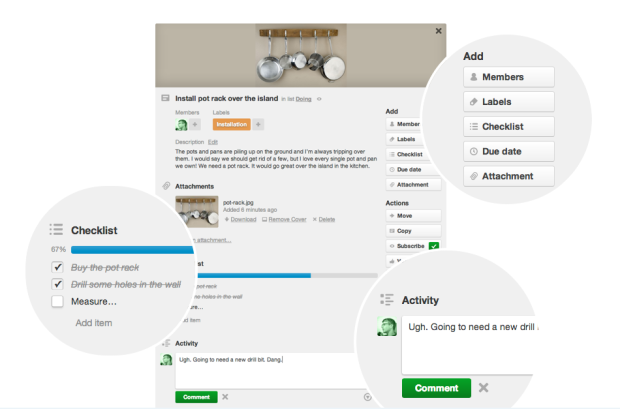


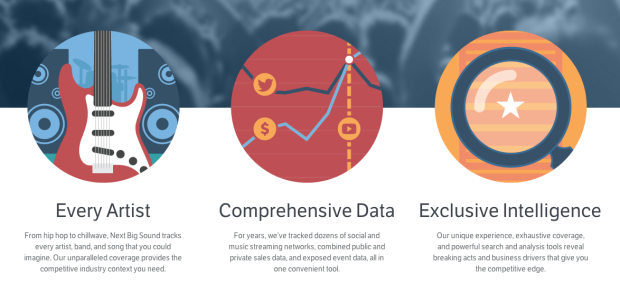


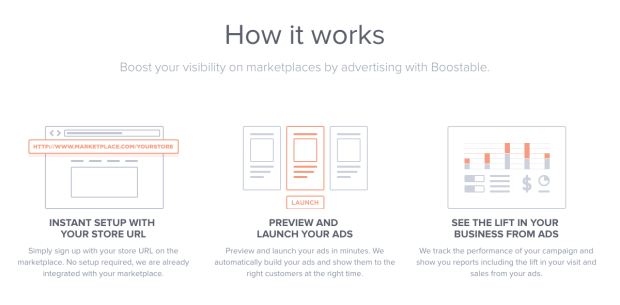
5. More information: For visitors who want to learn more.
You will definitely find a certain number of visitors who are not satisfied with the information on the main page. These users will want to find as much information about your product as possible before you start thinking about using it. That is why you need to make sure that visitors can easily get to other parts of your site from the main page.
Some startups did this by adding a second call to action, leading to a detailed product description, to the FAQ page, or adding useful links to the footer. Make sure that your visitors have where to go next if you do not want to send them to register.
Testing ideas:
- Add a second call to action, leading to more information.
- Add a FAQ section to the page with answers to basic questions.
- Paste links to a block or database of answers in the footer.
Here are some examples from startups:

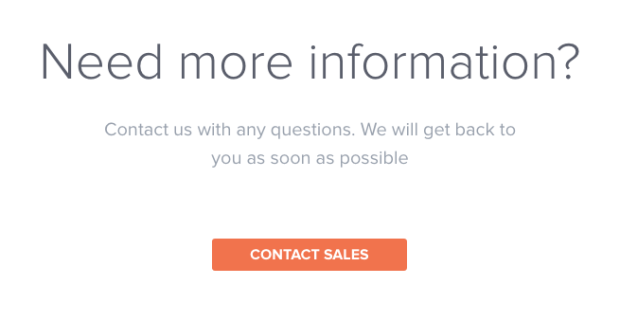

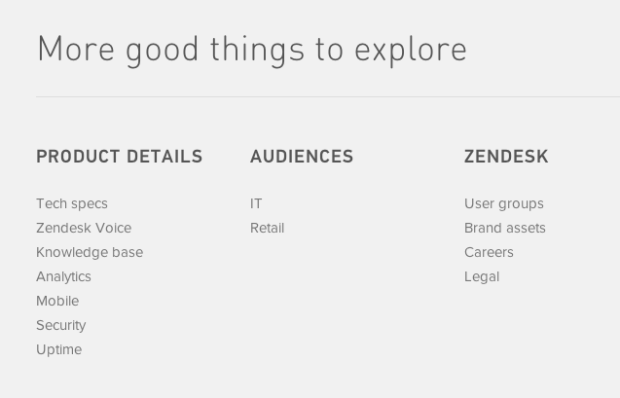

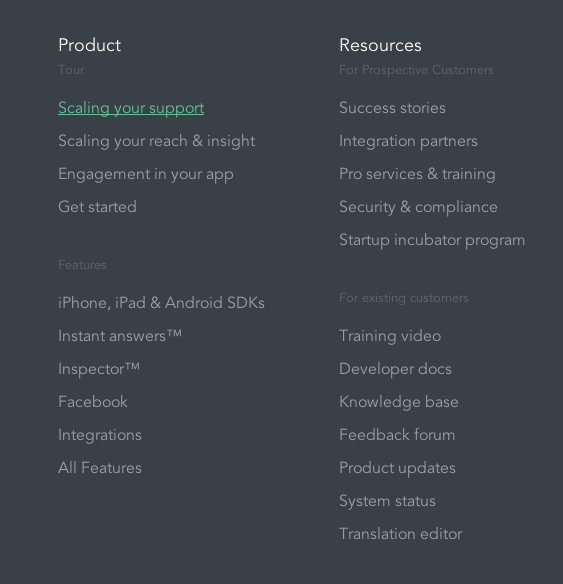



And so the final list: an idea to check
Thanks to the analysis of sites you can highlight 17 ideas that are worth trying on your page. It is important to remember that an idea that works on one site may not fit yours. Detailed A / B testing is needed to check how a particular element affects conversion. And remember: sometimes removing content from your page may be the most effective solution. And so the final list:
- Test new slogans.
- Add or change the description after the slogan.
- Test new phrases for calls to action - try the word "free."
- Try different colors and formats.
- Add an input field before the call to hook the visitor.
- If your registration form is small, try pasting it into the main page.
- Add a list of customers - even a small list can help.
- Use the service www.userstats.com to quickly add social. evidence to your site.
- Ask your customers to write a review.
- If you know a customer who is satisfied with your product, try building a case based on his example.
- Add screenshots to visually explain what your product is doing.
- If possible, create a short video describing what benefits your product will bring.
- Try to get feedback on each function in your product, it will help to show the benefits from them in the words of customers.
- Make your functions more profit oriented. Just answer: How will this feature help my clients?
- Add a second call to action, leading to more information.
- Add a FAQ section to the page with answers to basic questions.
- Paste links to a block or database of answers in the footer.
The list above should give you a few ideas on what to try on your site so that even more people subscribe to your service. But before starting any changes, analyze your current site to know what to compare your progress with.
Source: https://habr.com/ru/post/240719/
All Articles

